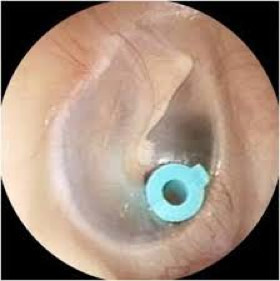
An ear tube is a thin plastic tube that makes a hole in your skull for air and fluid to pass through. The top of the tube is located inside the skull above the ear canal. This tube covers the ear so that there is no space between the eardrum and the head.
The ear tube is an airtight seal on the outside of the head, which ensures that the fluid in the ear stays inside and does not leak out of the head. As we age, the auricles may become smaller and may not completely prevent fluid drainage. This can lead to a ruptured eardrum and hearing loss. When you hear a loud sound or your inner ear vibrates, you are actually experiencing a condition known as tinnitus.
The ear tube usually needs to be replaced every two to three years. The most common reason for ear tube replacement is sudden stopping the baby’s development. In this case, the surgeon will remove the remaining tubes and replace them with new ones. In most cases, when babies stop growing, the growth plates in the ears do not close properly. This leads to the formation of folds on the head.
Earplugs can also be used to keep the earmolds open after the baby has stopped growing. If your child begins to lose hearing soon after the growth plates begin to close, it is highly recommended to have a hearing test. A hearing test is used to determine the extent of damage to the inner ear caused by hearing loss and to determine if damage will require the use of hearing aids.
Surgery is the only way to correct conditions that are causing the ears to close. There are two types of transactions: open and closed. In open surgery, the surgeon makes an incision around the ear and removes fluid from the ear. He can then place the implants in the correct position in the head so that the tubes are open.
If you decide to have surgery, you have several options. You can have your surgical procedure done by a board-certified otolaryngologist or an ENT specialist. doctor. In the first case, general anesthesia is used and is very expensive. However, this is the most efficient and quickest way to fix the problem.

Another option is to flush the fluid from the ear out of the body. This procedure is called open ear drainage. The fluid then moves back to the head to stop fluid buildup and allow the tubes to remain open. The operation is slightly more expensive than the latter method, but requires a relatively small incision and results in less scarring and bleeding than the former method.
If you choose the second option, make sure you have a hearing aid after completing the surgery. The device can provide better protection and can make your life easier after surgery. Do not wear the devices for a long time. Once you get home, you can use a hearing aid to protect your inner ear while you sleep.
In closed ear surgery, the doctor uses instruments to make an incision in the ear canal and remove fluid. The surgeon then inserts the implants into the correct position. After surgery, the device is removed and the tubes are inflated again.
This method can take much longer than open ear surgery and may require more than one hearing aid. This is why most parents choose to re-inflate the tubes.
You can avoid a lot of stress and anxiety if your earmolds are inflated again because you can wear hearing aids without any problems. until the straws are ready. This way, you don’t have to worry about closing the tubes while you sleep or what might happen if it does.